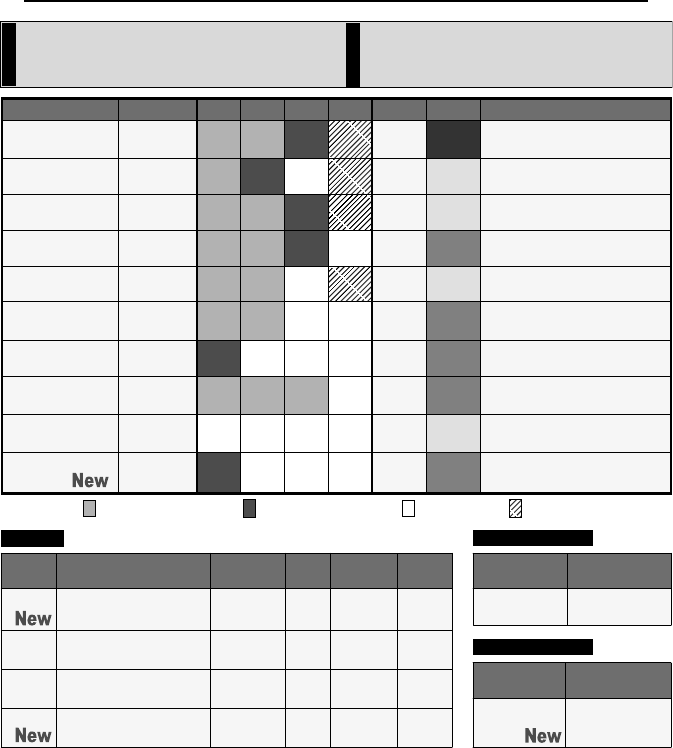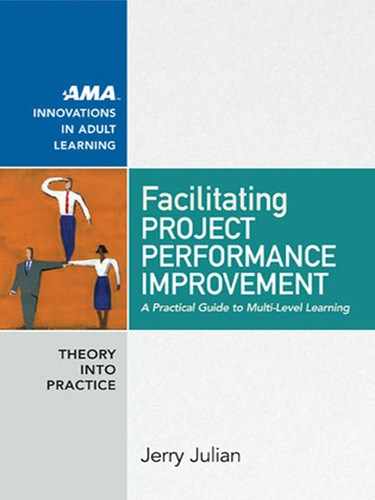
158 Implementing Multi-Level Learning
American Management Association
www.amanet.org
covered in Chapter 3, the coach will develop an agenda, date, and time for
the prospective, in consultation with senior decision makers and the PMO
leader. Each prospective may have a di erent emphasis depending on what
stage in a strategy or program’s life cycle it is in and how much experience
the senior team has with these types of sessions. Yet regardless of where
the team members are with regard to their progress or experience, the
purpose of the prospective is to answer and come to agreement on the
following questions for the upcoming period, phase, or iteration. These
questions serve as the outline of the agenda:
1. What is the team’s strategic intent for the upcoming time period?
2. What projects and programs are required to achieve the strategic in-
tent?
3. What are the roles and responsibilities of each individual with respect
to making this happen?
4. What are the key performance indicators that will enable us to know
whether or not we have accomplished what we set out to achieve?
Key
Stakeholders
Project
MgrPMOSponsor
Mgt Team
MemberCOOPhaseDecision
A = APPROVE— a person who must sign off or veto a decision before it is implemented or selected from
options developed by the R role; accountable for the quality of the decision.
R = RESPONSIBLE—the person who takes the initiative in the particular area, develops the alternatives,
analyzes the situation, makes the initial recommendation, and is accountable if nothing happens in the area.
C = CONSULTED—a person who must be consulted prior to a decision being reached but with no veto power.
I = INFORMED—a person who must be notified after a decision, but before it is publicly announced;
someone who needs to know the outcome for other related tasks but need not give input.
Create charter for new
project idea
Go/no-go on project charter
and move to Discover phase
Go/no-go on move to
Develop phase
Go/no-go on move to
Doit phase
Close out project
I
C
I
I
C
C
C
C
C
R
R
R
R
R
R
C
R
R
R
R
A
A
A
C
A
A
A
A
A
A
V
IV
III
II
I
FIGURE 7.3
RACI Chart for Project Portfolio Decisions

Facilitating Level 3: Strategic Portfolio Alignment 159
American Management Association
www.amanet.org
The team’s strategic intent is a series of statements about how it intends
to move toward achieving its strategic objectives. Examples include “Iden-
tify three core processes that can be moved to a shared services model,”
“Launch new product A,” and “Identify growth opportunities that will en-
able product B to gain over 20 percent market share.” Crafting these state-
ments will enable the senior team to get a handle on its overall strategy
Issues
Project planning in progress; staffing
completed.
Project charter needs approval.
Should be transitioned to steering
committee member.
Project charter refined; plan in progress.
Requirements approval required.
Should be transitioned to steering
committee member.
Recommendations not yet translated to
project charters.
Should be transitioned to steering
committee member.
Question as to how outputs will be
prioritized and decisioned.
Review for integration with Product
Development.
Decisions required for January launch.
Reason for RatingRAG
9/26
8/8
8/29
8/29
8/8
8/8
8/8
8/8
8/15
8/8
TollgateDoDevDis
T. Jackson
J. Minster
Talent Management
Program
T. Fireman
M. Hyman
Managerial Skill
Upgrade
M. Jackman
M. Rotter
Financial Process
Reengineering
M. Wolfman
S. Sintre
Web Strategy
J. Rigger
P. Ryan
Sales and Service
Strategy
T. Fireman
D. Porter
Customer Loyalty
Program Launch
T. Fireman
J. Jones
PM Process
Improvement
M. Forster
M. Forster
Transformation
Strategy
R. Feldman
N. James
Future Customer
Research
M. Rotland
N. Jones
Product Strategy
DefSponsor/PMProject
Last reporting period (7/18) Since last reporting period Out of ScopeTo be completed
TBDSCTBDTBDProduct Strategy4
TBDSCTBDTBDFinancial / Supply Chain
Integration
3
DelayedIT8/15E. SintreCustomer Relationship
Management System
2
1
Priority
On track
Status
SC8/8J. Ryan
M. Forman
Sales Forecasting Process
Redesign
Governing
Body
By
When
Charter
Assigned to
Project
Ideas
P. Ryan
Project Manager
Communication
Strategy
Project
Completed Projects
On Hold/Pending
Awaiting review &
agreed-upon
strategy
Reason
Workforce
Transition
Project
Headlines
– Projects generally progressing; charters and milestones refined
– Significant change in product/service model unlikely for January
– Must determine product/service strategy for 1
st
Qtr implementation
– Do we have a clear and compelling statement about the new
product and service strategy?
– How will Project Firestorm help us achieve the product strategy?
– To which quarterly cycle will the Market Research project apply?
FIGURE 7.4
Example Project Portfolio Dashboard
160 Implementing Multi-Level Learning
American Management Association
www.amanet.org
for the upcoming time period, enabling it to separate the details of each
project or program from the larger strategic picture. This may be done in
a top- down or a bottom- up way, depending on where the organization is
beginning. If investment priorities have yet to be translated into projects
and programs, then this may serve as a starting point for crafting state-
ments of strategic intent. Where there are already projects in the pipeline,
it may be useful to categorize related projects into families of initiatives
and “roll up” the strategic intent for each family. This would represent a
“bottom- up” approach.
In all cases, before addressing these topics in sequential fashion, the
coach rst facilitates a discussion about ground rules for group discus-
sions (see Chapter 3) and ensures that time is allocated to this task on the
agenda, particularly for the rst prospective. In situations in which the
team needs to develop statements of strategic intent and develop project
and program objectives from scratch, these topics will obviously require
more time on the agenda. The PMO leader can add tremendous value by
drafting the agenda items in advance so that the team can react, modify,
and agree rather than create them on the y. However, while the PMO
leader may have developed an initial list of roles and responsibilities in
Step 1E, these will need to be agreed upon in the group session, and time
should be dedicated to this task as well. Finally, time should be allocated
to determining key performance indicators for each statement of strategic
intent. For example, how will the group measure whether or not the in-
troduction of a new product was successful? Most organizations will have
measures that they use, such as customer satisfaction surveys, returns,
calls to the call center, and other such actions that indicate whether or not
the organization was successful in achieving its strategic intent.
Step 1h: Conduct the Prospective
In Chapter 3, we discussed the importance of having clari ed and con ict-
free goals, roles, and procedures. Getting clarity concerning strategic in-
tent, projects and programs, roles, and key performance indicators is the
primary goal of the strategy prospective. Unlike the retrospective, which
may place people in a defensive posture and therefore needs to be facili-
tated by the multi- level learning coach, the prospective may be led by the
PMO leader or a person in a similar role, as long as this person is skilled
..................Content has been hidden....................
You can't read the all page of ebook, please click here login for view all page.
